Industrial Relations: A Case Study Analysis of Conflict
VerifiedAdded on 2022/09/08
|9
|638
|21
Report
AI Summary
This report delves into the intricacies of industrial relations, using a case study to examine the relationship between unions and management within an organization. The report highlights key issues such as employee termination, the role of collective bargaining, and the impact of organizational conflict on productivity. It explores different perspectives, including those of the management and the union, while also analyzing the need for a third-party involvement to resolve the conflict. Furthermore, it discusses the importance of maintaining good relationships between unions and management, and how to resolve conflicts in a constructive manner. The report also discusses the process of collective bargaining, including the importance of effective communication, negotiation strategies, and the need to consider the legal framework. The report concludes by emphasizing the importance of creating a harmonious work environment and the need to satisfy employees' demands to improve productivity and maintain a strong workforce. References are provided to support the analysis.
1 out of 9


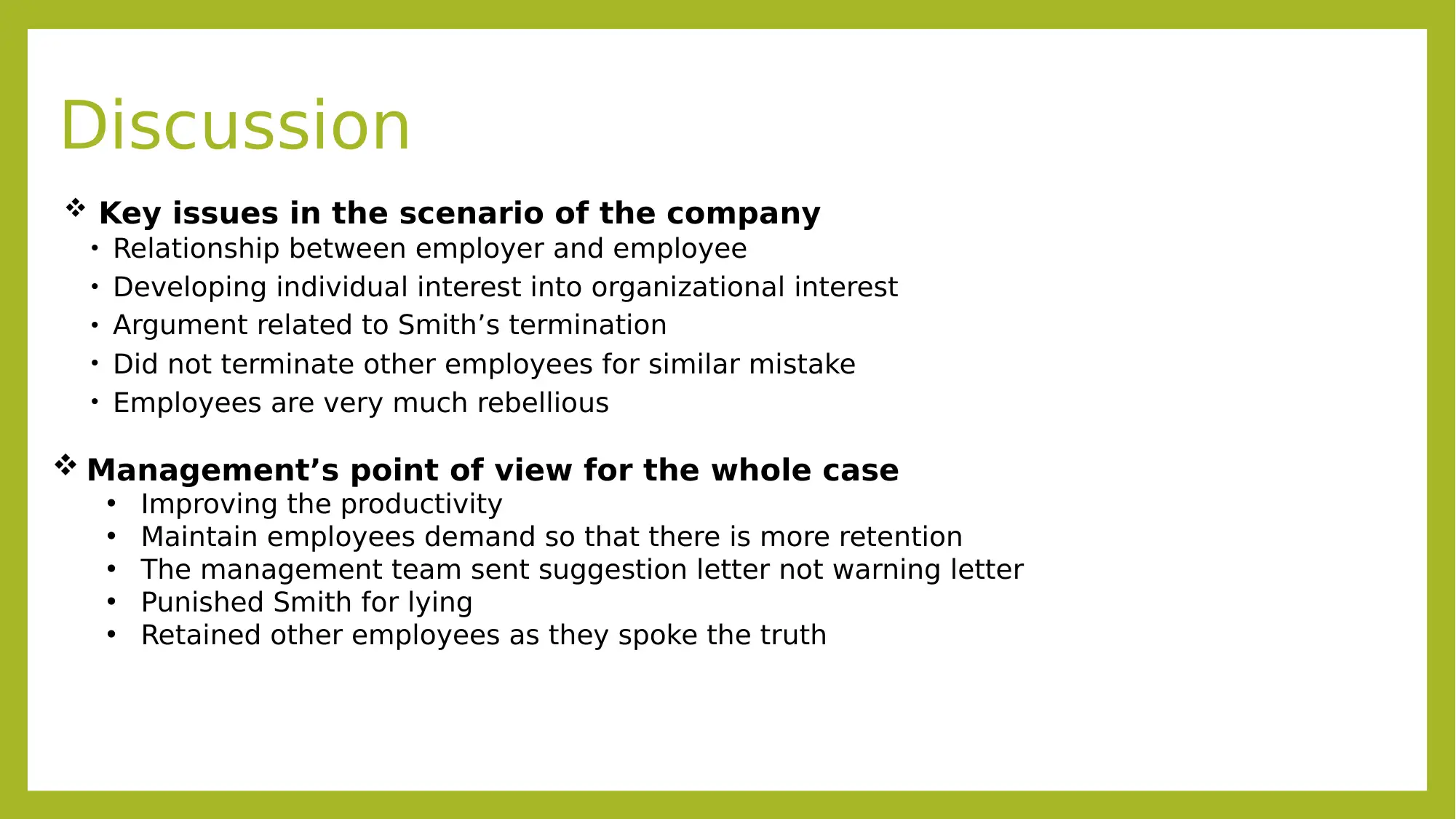

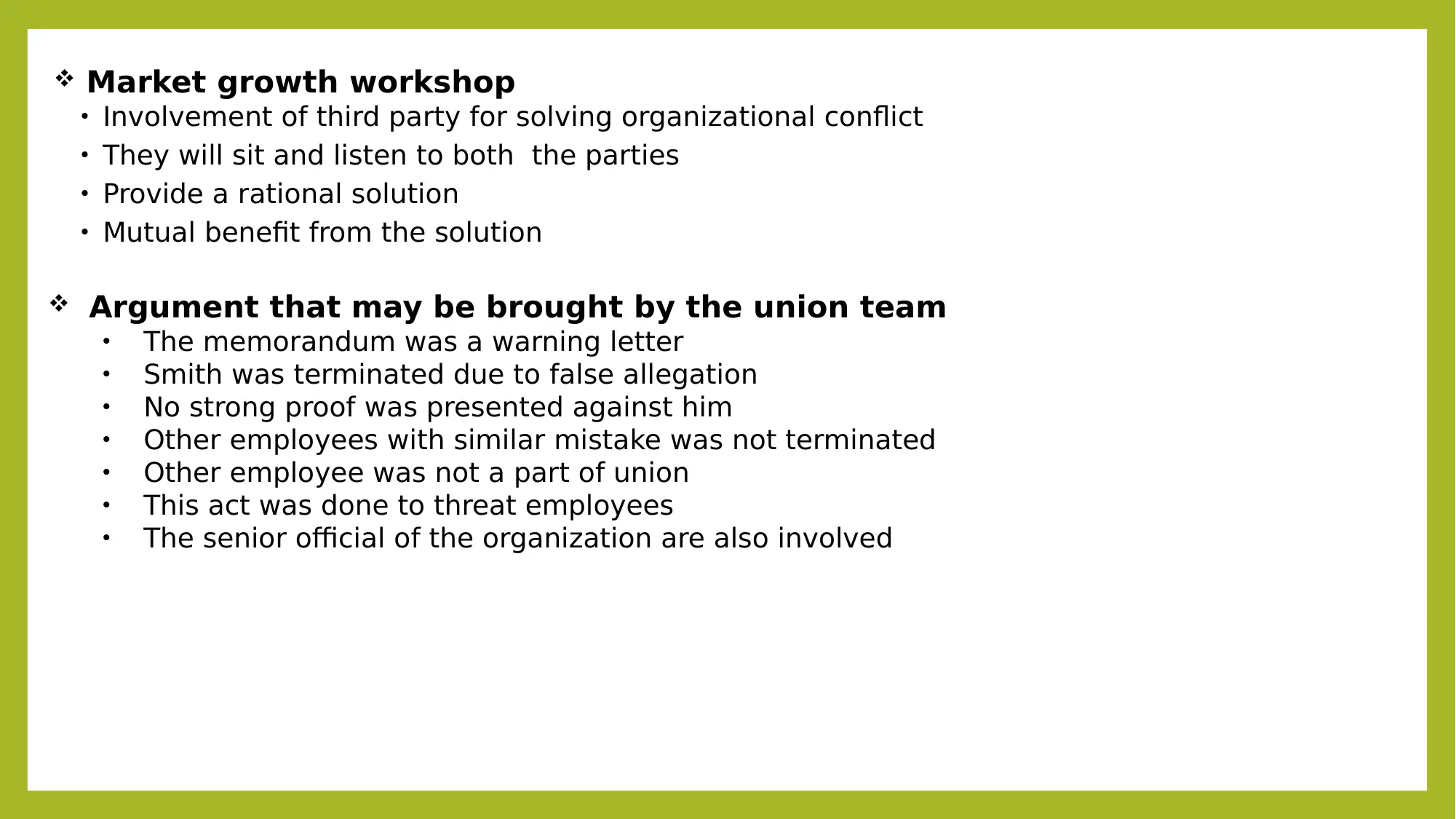
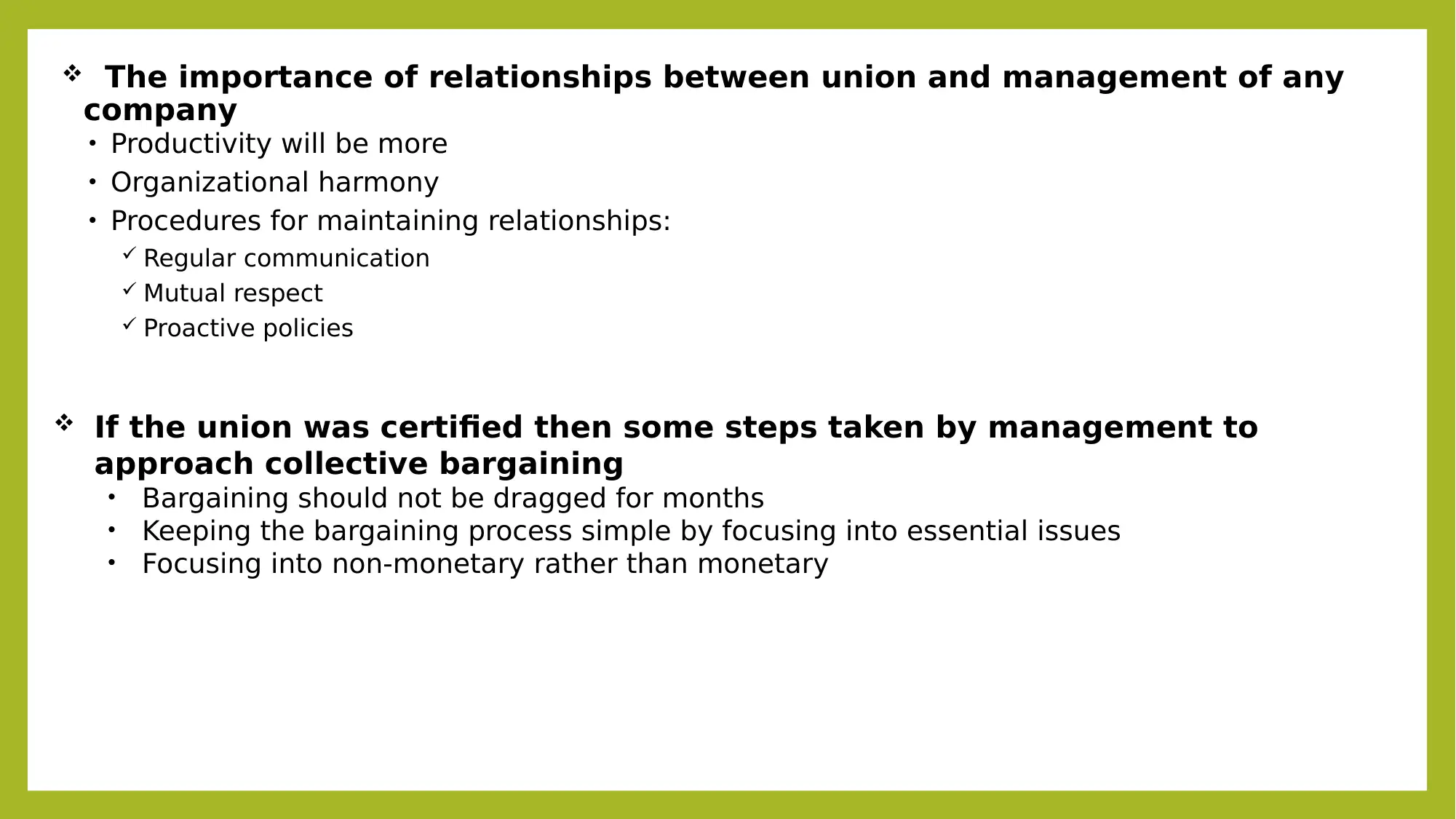
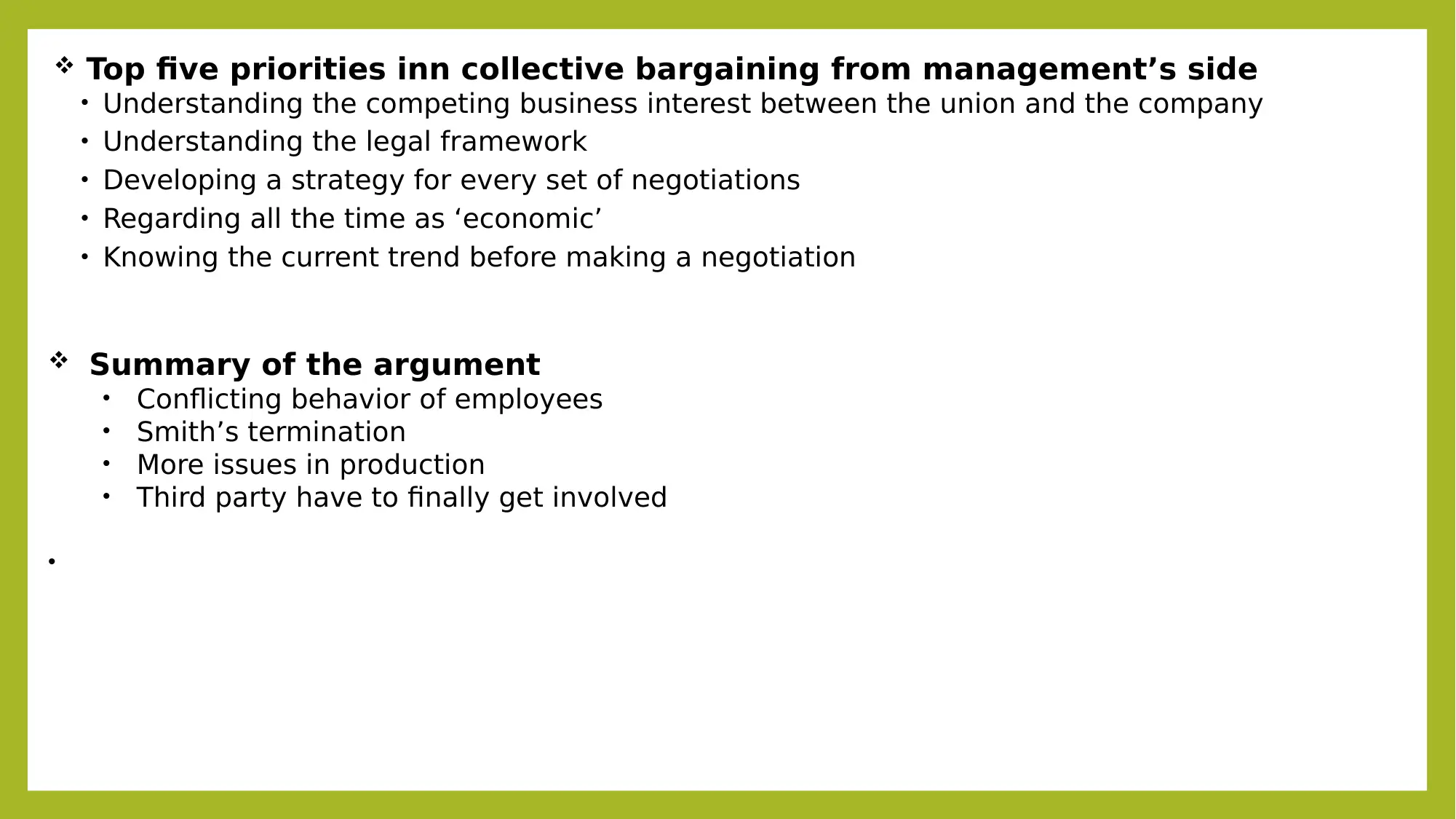
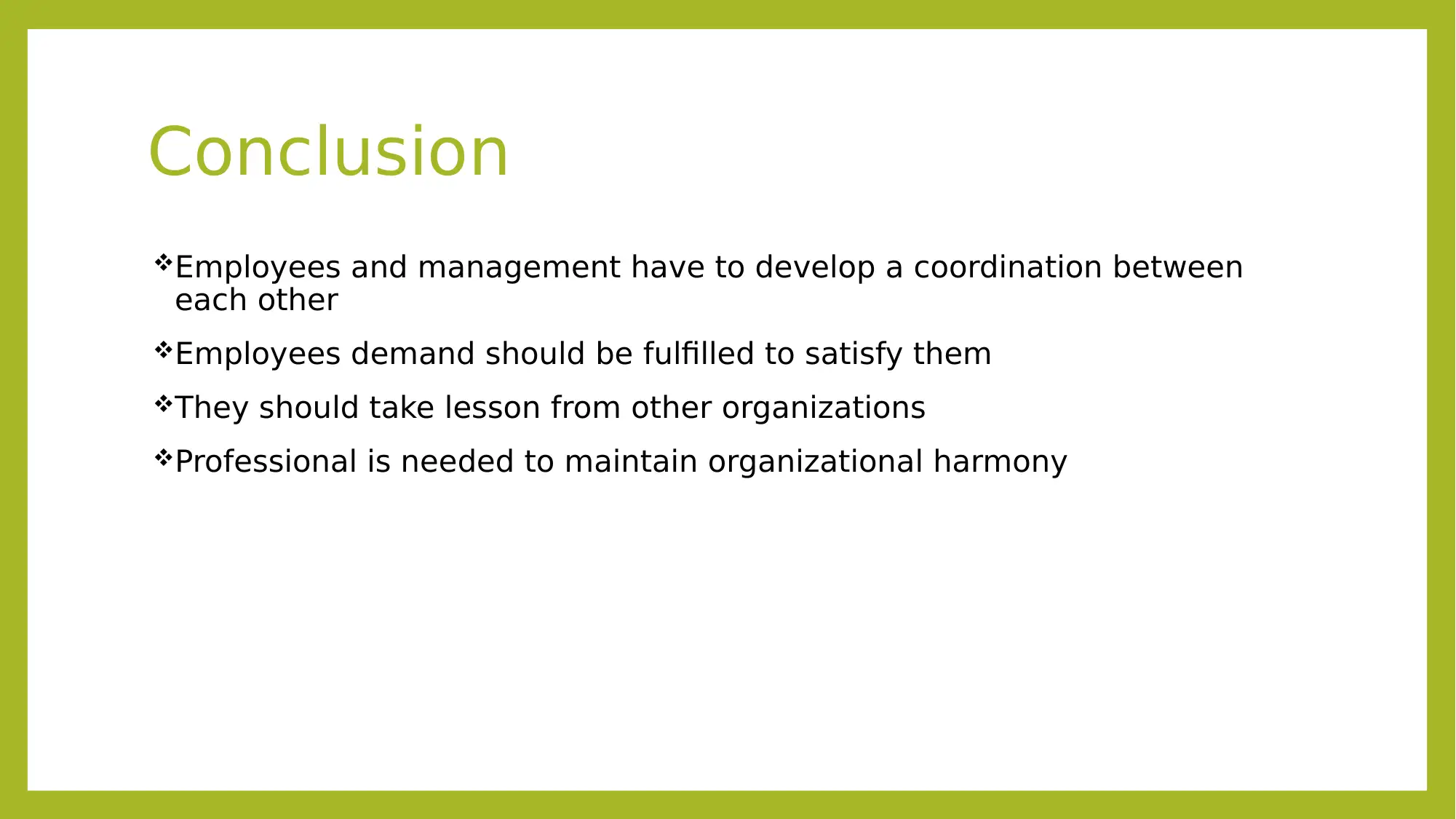








![[object Object]](/_next/static/media/star-bottom.7253800d.svg)